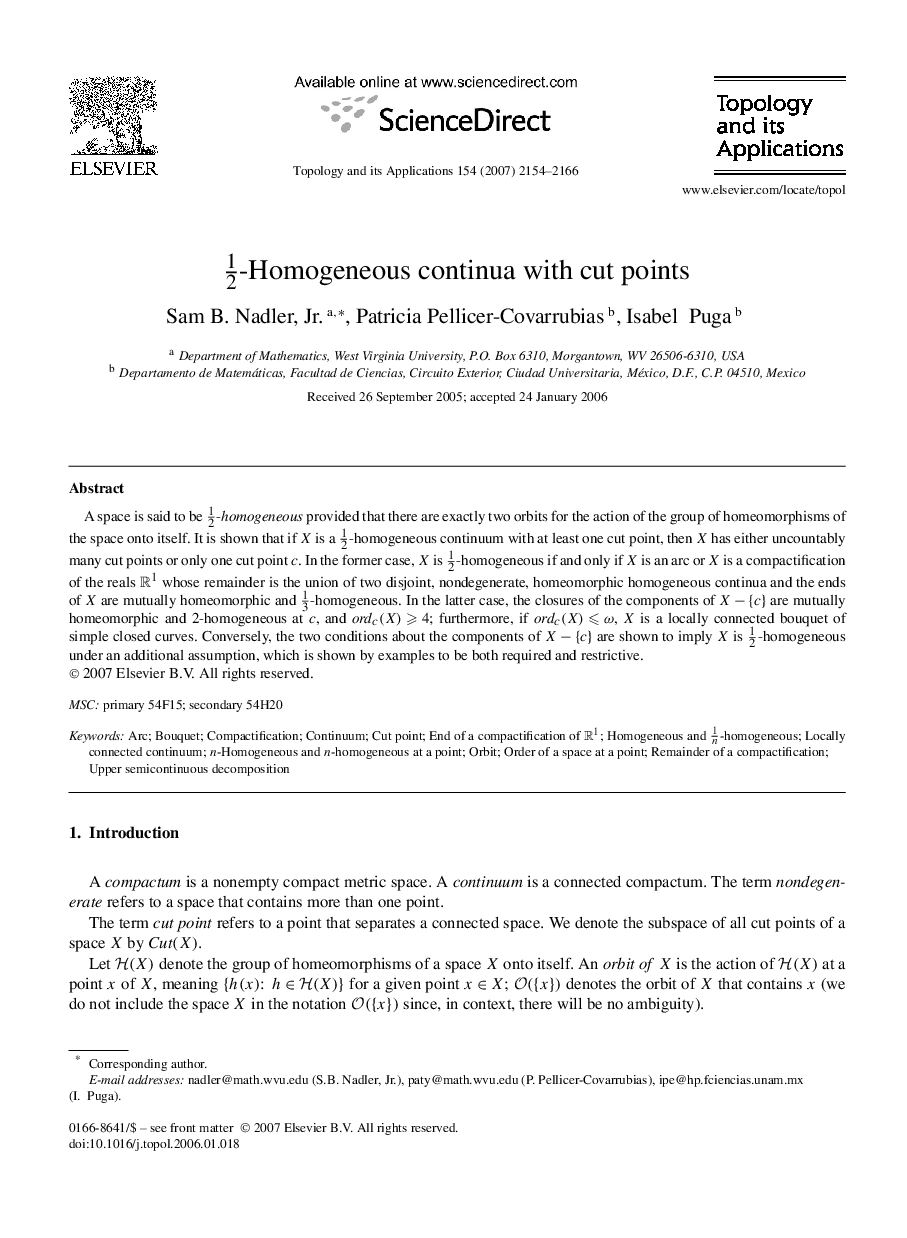| Article ID | Journal | Published Year | Pages | File Type |
|---|---|---|---|---|
| 4661237 | Topology and its Applications | 2007 | 13 Pages |
A space is said to be -homogeneous provided that there are exactly two orbits for the action of the group of homeomorphisms of the space onto itself. It is shown that if X is a -homogeneous continuum with at least one cut point, then X has either uncountably many cut points or only one cut point c. In the former case, X is -homogeneous if and only if X is an arc or X is a compactification of the reals R1 whose remainder is the union of two disjoint, nondegenerate, homeomorphic homogeneous continua and the ends of X are mutually homeomorphic and -homogeneous. In the latter case, the closures of the components of X−{c} are mutually homeomorphic and 2-homogeneous at c, and ordc(X)⩾4; furthermore, if ordc(X)⩽ω, X is a locally connected bouquet of simple closed curves. Conversely, the two conditions about the components of X−{c} are shown to imply X is -homogeneous under an additional assumption, which is shown by examples to be both required and restrictive.
